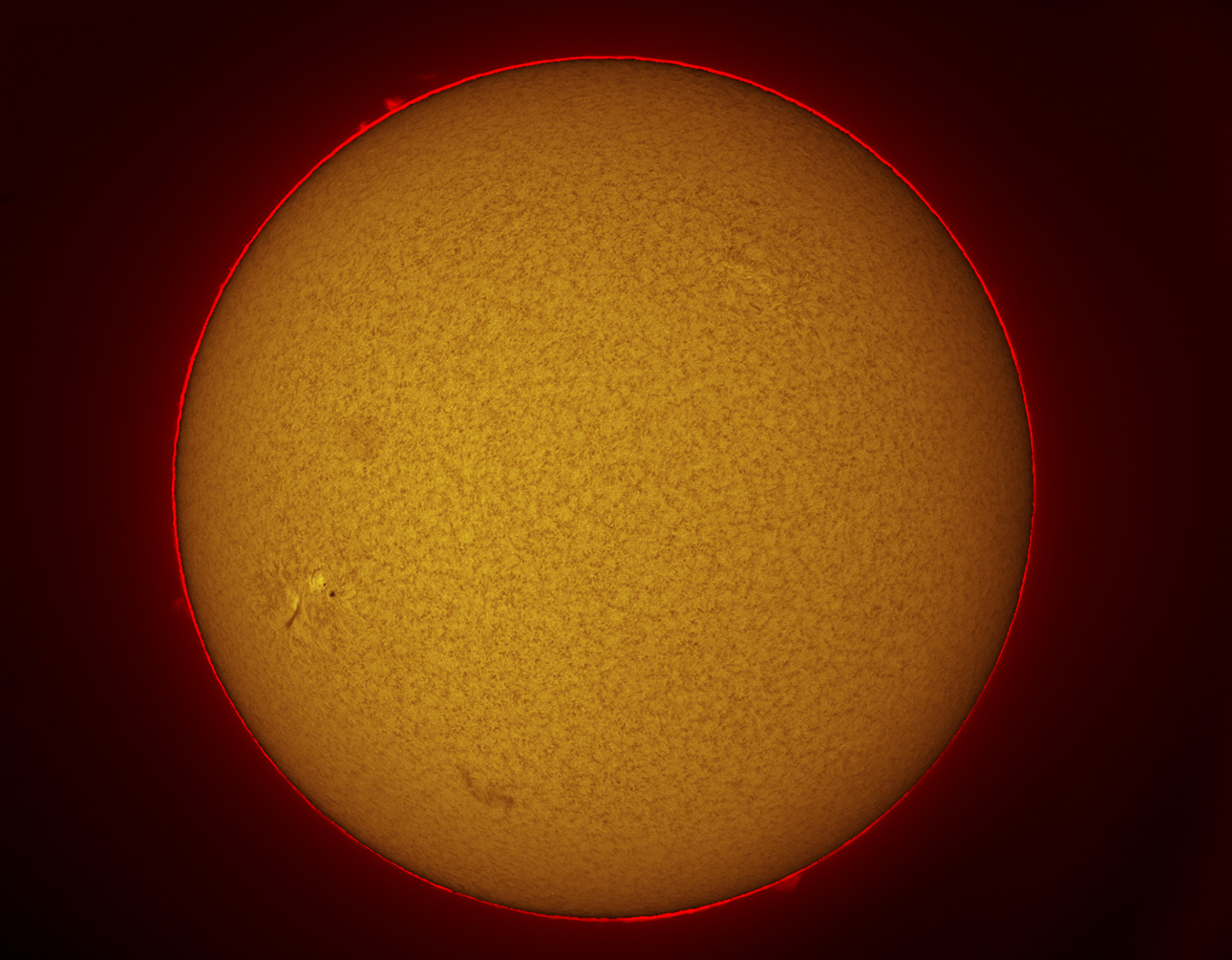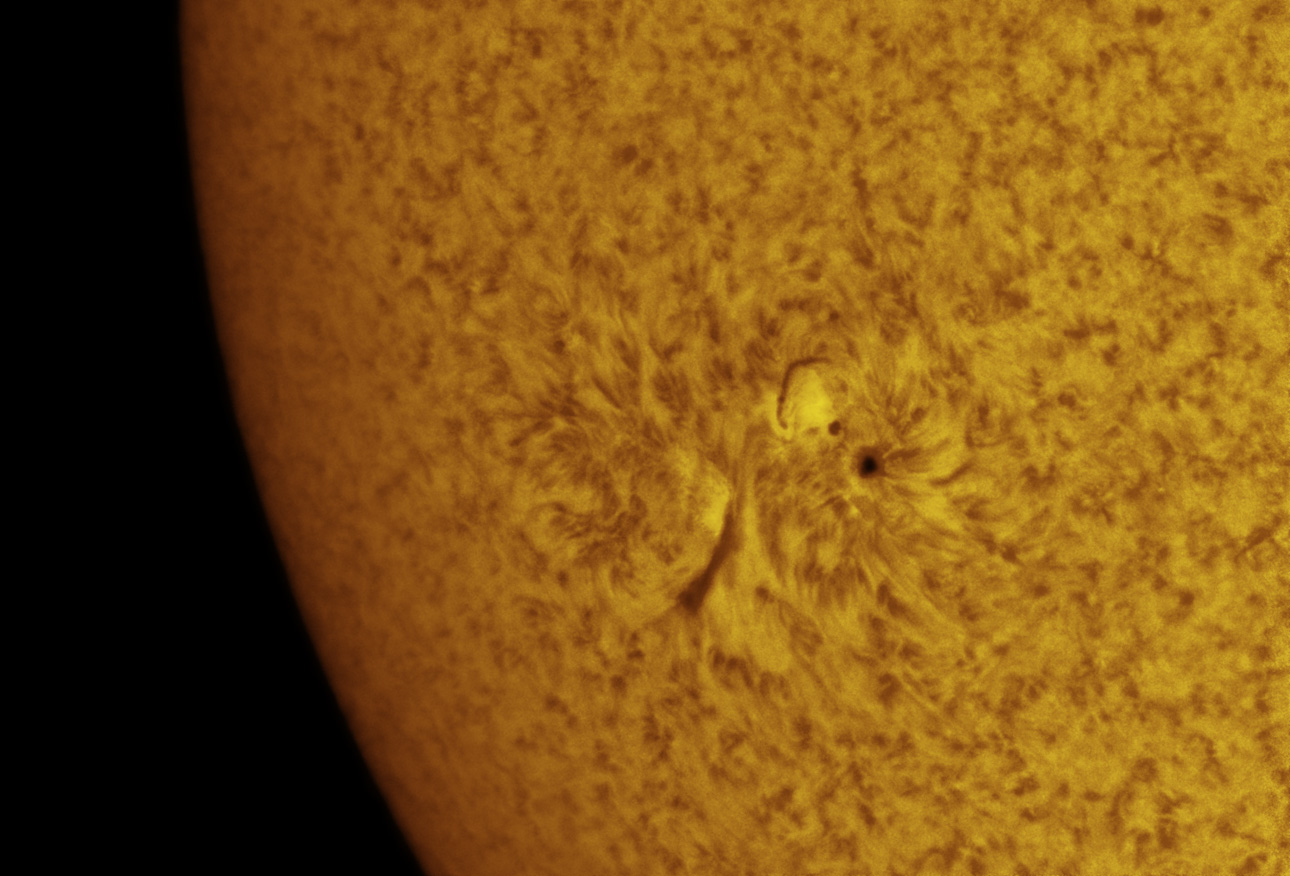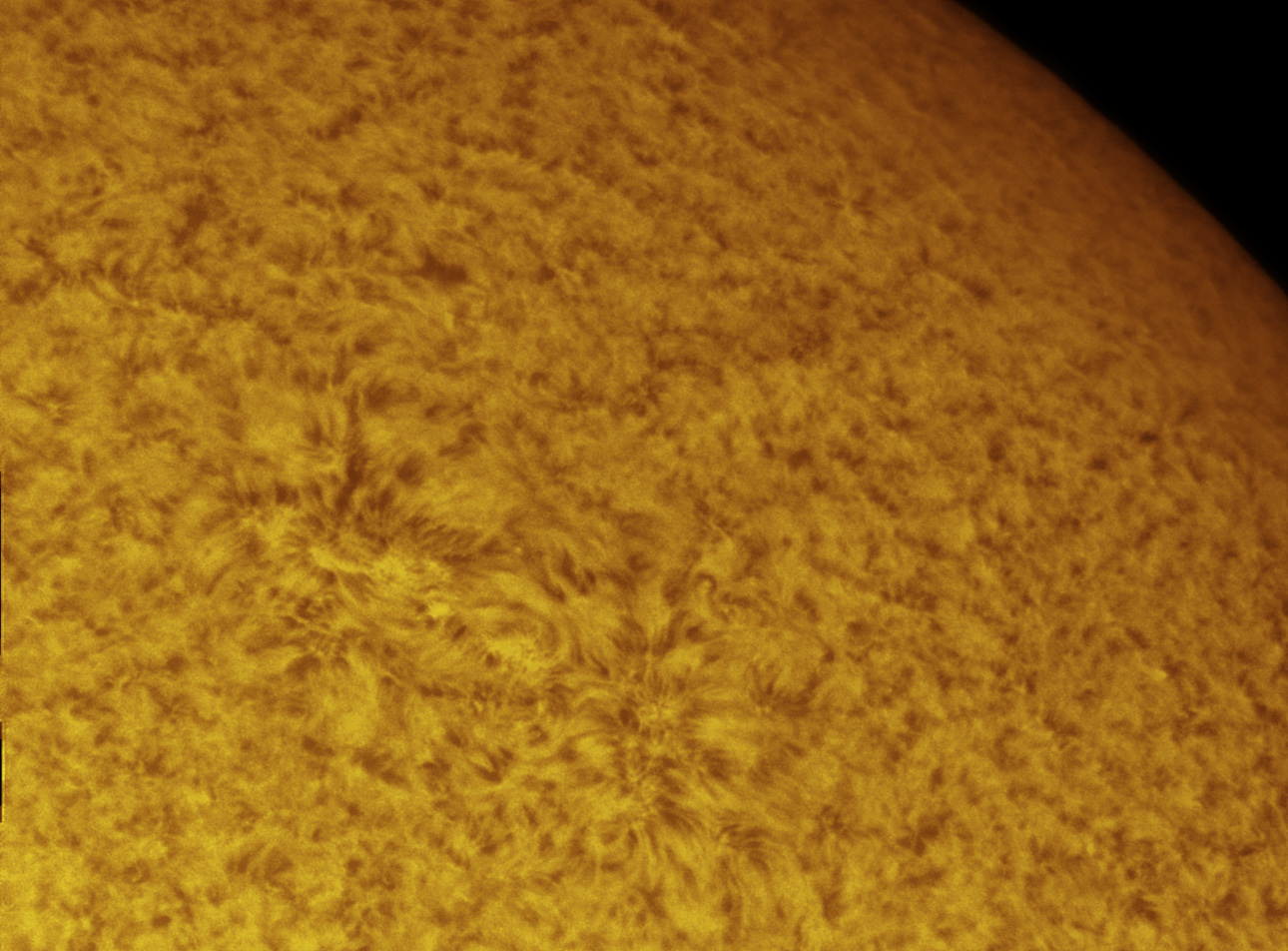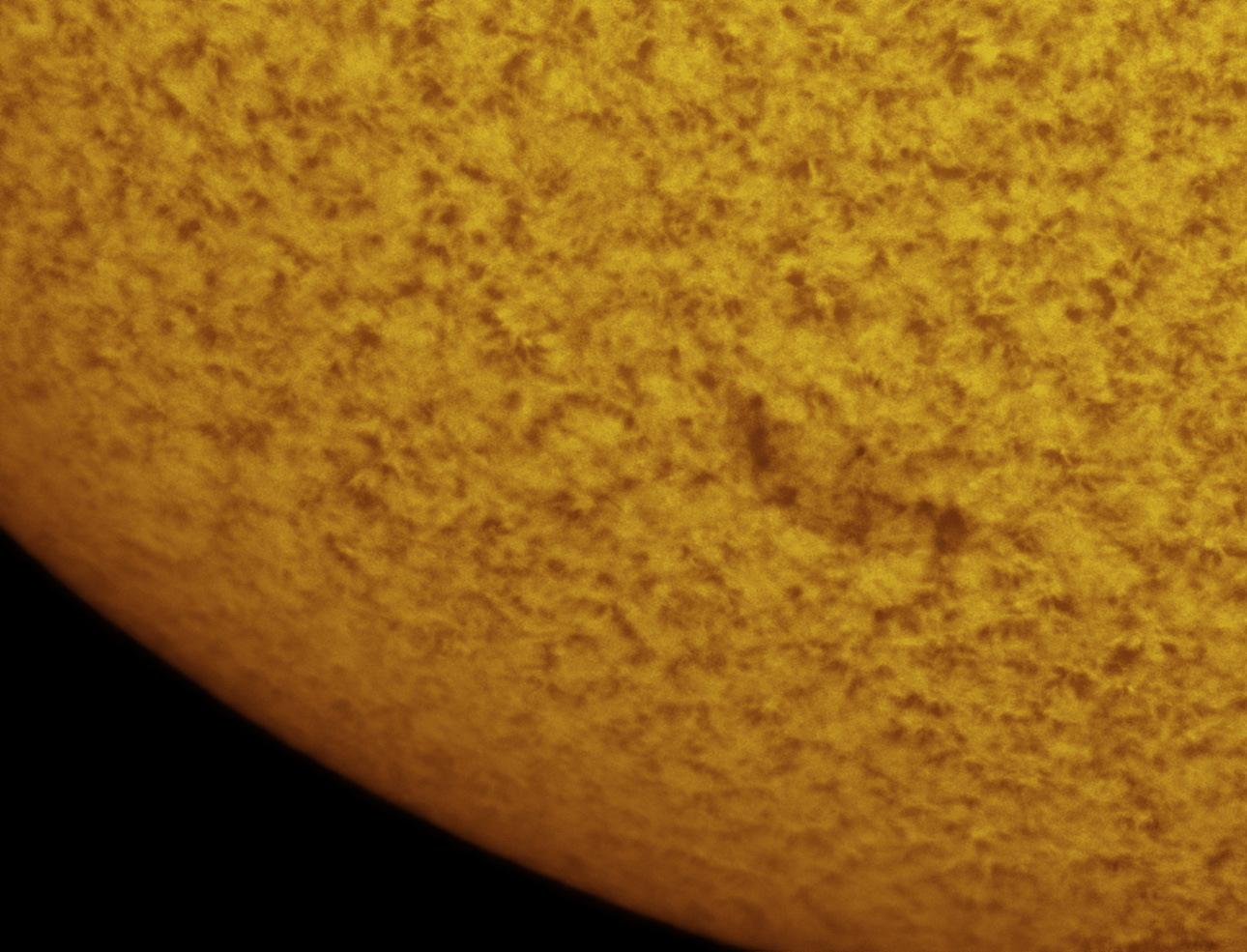Sun in HAlpha With Lunt LS100THa Uploaded 6/6/20 Daily Report For Saturday June 6, 2020
Images below are 1290 wide and non clickable
Only rarely during solar minimum do we get to see sunspots. This one is from the next solar cycle and is hopefully a sign of things to come in the near future.
Halpha:
Lets start with the full disk shot, you can see several active regions. The small group of sunspots are on the lower left here, and a region of enhanced magnetic activity is upper right. The limb shows a few prominences, but nothing substantial.
Here we employ the 3x Klee barlow to boost the details. Seeing was not great, so some of the details are not quite as sharp as on a good day, but you can see a lot of plage around the sunspot, some filaments as well.
The other active region on the disk has lots of activity, despite not showing any sunspots.
Here is a filament on the disk, which is a prominence that is not seen on the limb, but rather in front of the solar disk and appears dark rather than light as on the limb.
Finally, a shot in the "Red Wing of H-alpha", which is offset in band by 3/4 angstrom. This reduces disk detail, but allows you to see many of the small white spots around the spot which are mini flares called "Ellerman Bombs".
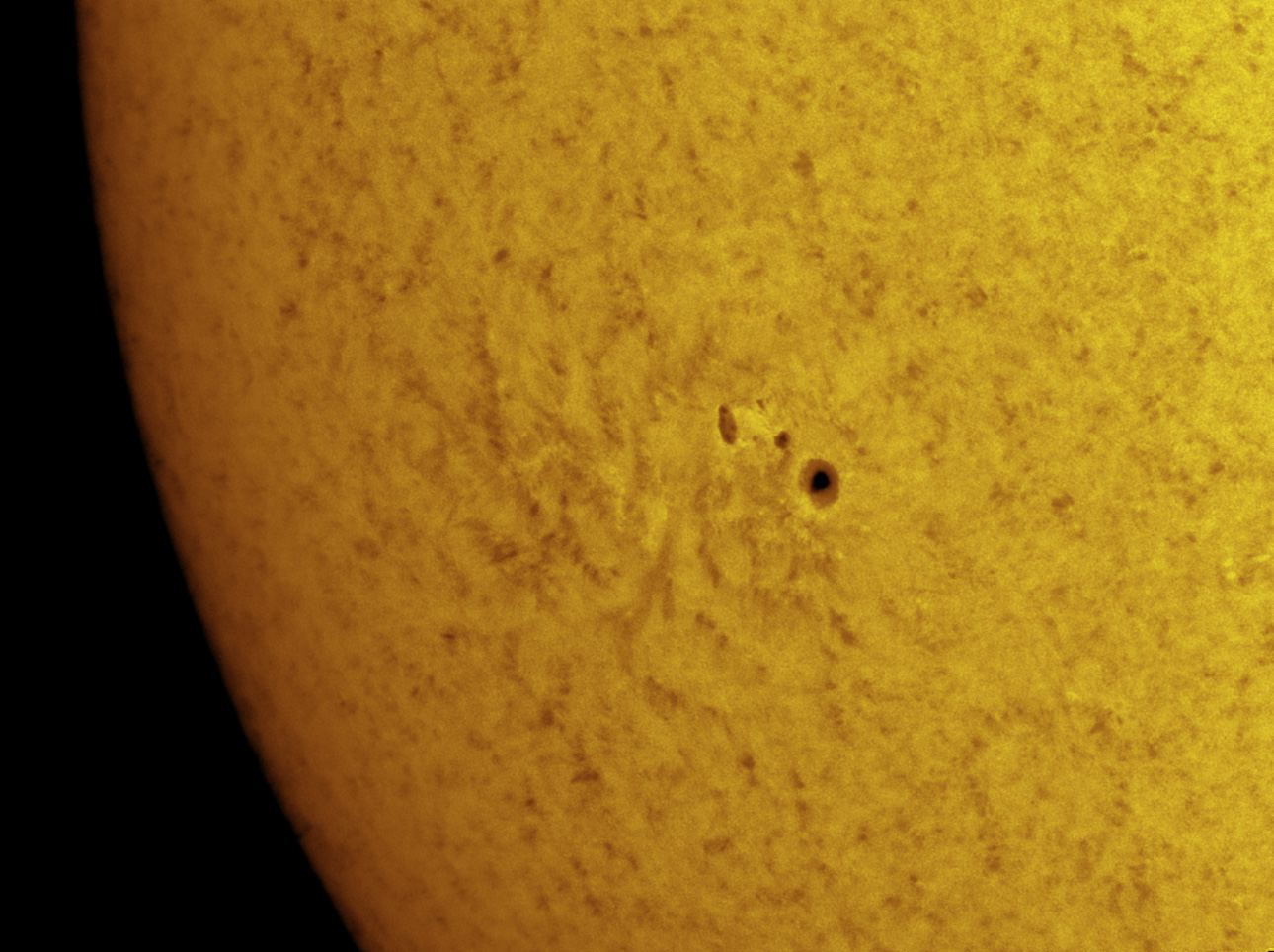
Instruments: Lunt LS100THa Halpha Platform: Astrophysics 1200 Camera: DMK 51 Location: Payson, Arizona Elevation: 5150 ft. Sky: Seeing 2/10, Transparency 6/10 Outside Temperature: 65F Processing: Registax 6, Photoshop CS2 Solar Home Page HOME SCHMIDT GALAXIES EMISSION NEBS REFLECTION NEBS COMETS GLOBULARS OPEN CLUST PLANETARIES LINKS
